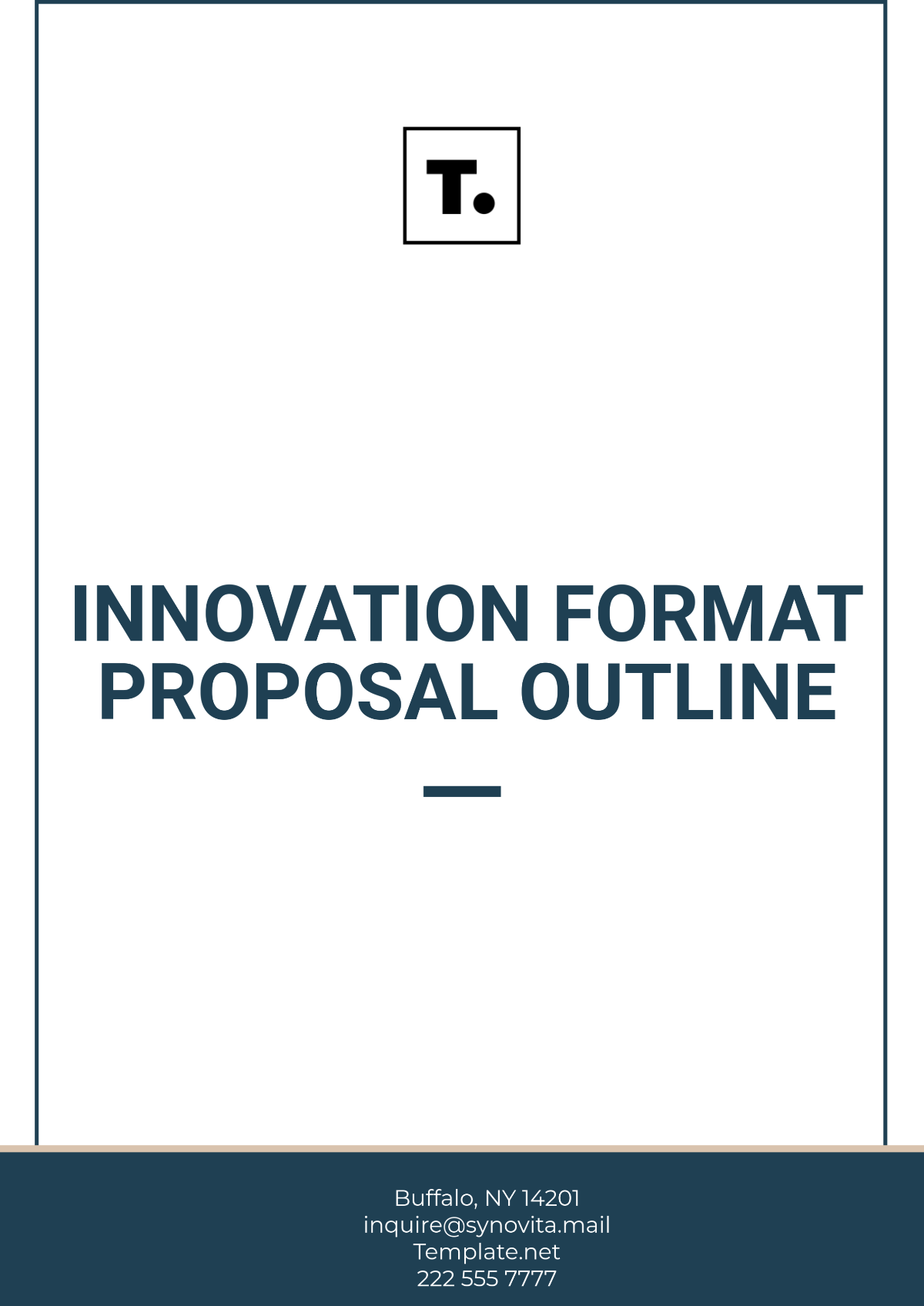Simple Movie Theater Audio Visual Proposal
I. Introduction
A. Overview of [Your Company Name]
[Your Company Name] operates a premier movie theater located in [Your Company Address]. Established with a vision to provide an exceptional cinematic experience, we have consistently upgraded our facilities to meet the expectations of our discerning audience. Our commitment to quality extends to investing in cutting-edge technology to ensure that every visit to our theater is memorable.
B. Purpose of the Proposal
The purpose of this proposal is to advocate for the enhancement of our current audio-visual (AV) systems. As technology evolves, so do the expectations of our patrons. This proposal outlines our plan to upgrade our AV infrastructure to deliver superior audio and visual quality, ensuring that [Your Company Name] remains at the forefront of cinematic experiences in [Area/State].
C. Scope of Work
This proposal encompasses:
Assessment of the current AV setup and its limitations.
Proposal for a new AV system with advanced features.
Detailed plan for installation, maintenance, budget, and implementation timeline.
II. Current Setup Assessment
A. Description of Current Audio Visual (AV) Systems
Currently, our movie theater is equipped with a variety of audio-visual equipment designed to deliver an immersive cinematic experience. The existing setup includes:
Projectors: We utilize high-definition digital projectors capable of displaying crisp images on our screens. However, these projectors are nearing the end of their operational lifespan.
Screens: Our screens are strategically positioned to ensure optimal viewing angles for our patrons. They are currently of standard quality, but advancements in screen technology could enhance visual clarity.
Sound Systems: Our sound systems feature multi-channel surround sound, providing an immersive audio experience throughout the theater. However, there is room for improvement in achieving higher fidelity and clarity.
Lighting Systems: LED lighting systems are employed to enhance ambiance and ensure visibility during movie screenings.
B. Evaluation of Current Equipment Performance
The performance of our current AV systems has generally met the expectations of our patrons. However, there are noticeable limitations that impact the overall viewer experience:
Sound Quality: While our sound systems deliver adequate clarity and surround sound, there is a demand for enhanced audio fidelity and immersive capabilities such as Dolby Atmos to further engage our audience.
Visual Clarity: The projectors, while still functional, are showing signs of reduced brightness and clarity due to aging bulbs and technology advancements. This impacts the sharpness and vibrancy of images projected onto the screens.
System Reliability: Our AV systems occasionally experience downtime, especially during peak movie hours, which affects the seamless operation of screenings. Maintenance issues, such as software glitches and hardware failures, require immediate attention to minimize disruptions.
C. Identified Challenges and Limitations
The challenges with our current AV setup highlight the need for an upgrade to enhance the quality of audio and visual presentation. These limitations directly impact:
Customer Satisfaction: Patrons expect premium audiovisual experiences that rival home entertainment systems. Addressing the current shortcomings will increase satisfaction and encourage repeat business.
Competitive Positioning: In a competitive market, superior AV technology can differentiate [Your Company Name] from other theaters. By investing in state-of-the-art equipment, we can attract a broader audience seeking high-quality cinematic experiences.
D. Strategic Importance of Upgrade
Upgrading our AV systems is not merely about meeting current standards but also future-proofing our theater against technological advancements. By investing in cutting-edge AV technology, [Your Company Name] aims to set new benchmarks for audiovisual excellence in the local entertainment industry.
III. Proposed Audio Visual System
A. Goals and Objectives
The primary goals of the proposed AV system upgrade are to:
Enhance audio clarity and immersive sound experience: By implementing Dolby Atmos surround sound systems and optimizing speaker placement to create a dynamic audio environment.
Improve visual quality with high-definition projection capabilities: Utilizing high-resolution digital projectors with at least 4K resolution and 6000 lumens to ensure sharpness and brightness suitable for large theater screens.
Ensure reliable and efficient operation: Minimize downtime during peak hours through robust system design and the use of reliable equipment that supports continuous operation without interruptions.
B. Key Features and Specifications
The proposed AV system will include:
Projectors: High-resolution digital projectors with at least 4K resolution and 6000 lumens.
Screens: Acoustically transparent screens for optimized sound projection, sized 150 inches and made from specialized acoustic fabric.
Sound Systems: Dolby Atmos surround sound systems, configured with 7.1 channels and 12 speakers for immersive audio experiences.
Lighting Systems: LED lighting systems for enhanced ambiance control, featuring ambient lighting type with remote control capabilities.
C. Benefits of the Proposed System
The implementation of the new AV system will offer several benefits:
Enhanced Viewer Experience: Crisp visuals and immersive sound will elevate the cinematic experience, attracting more patrons and increasing audience engagement.
Improved Operational Efficiency: Reduced maintenance needs and minimized downtime will ensure smoother operations and fewer disruptions during peak movie hours.
Competitive Advantage: Positioning [Your Company Name] as a leader in cinematic technology within the local market, driving customer loyalty and satisfaction by offering state-of-the-art audiovisual experiences.
IV. Detailed Plan
A. Equipment List
Equipment | Specifications | Quantity |
|---|---|---|
Digital Projectors | Resolution: 4K, Lumens: 5000 | 3 |
Acoustically Transparent Screens | Size: 150 inches, Material: Acoustic fabric | 3 |
Dolby Atmos Sound Systems | Channels: 7.1, Speakers: 12 | 1 |
LED Lighting Systems | Type: Ambient Lighting, Control: Remote | 1 |
B. Installation Process
Timeline The installation will be phased over 4 weeks, ensuring minimal disruption to daily operations. Key milestones include equipment delivery, installation, testing, and final calibration.
Installation Phases
Phase 1: Preparation and site assessment
Phase 2: Projector and screen installation
Phase 3: Sound system installation
Phase 4: Lighting system installation
Testing and Quality Assurance Each phase will undergo rigorous testing and calibration to ensure optimal performance and adherence to industry standards.
C. Maintenance Plan
Routine Maintenance Schedule A scheduled maintenance plan will include:
Weekly system checks
Quarterly equipment calibration
Annual comprehensive maintenance by certified technicians
Support and Service Options [Your Company Name] will engage with [service provider name] for ongoing technical support and emergency service calls to address any issues promptly.
V. Budget and Cost Analysis
A. Cost Breakdown
Expense Category | Amount ($) |
|---|---|
Equipment Purchase | $150,000 |
Installation Costs | $30,000 |
Maintenance Costs | $10,000 |
Contingency | $5,000 |
Total | $195,000 |
B. Funding and Financial Considerations
Budget Allocation
Funding for the AV system upgrade will be allocated from our operational budget for capital expenditures. The total budget of $195,000 has been earmarked for this project, ensuring that we can implement the necessary improvements without compromising other operational needs.
Funding Sources
The funding will primarily be sourced from:
Internal Reserves: Utilizing surplus funds from our operational budget.
Bank Financing: Exploring financing options with our banking partners to secure favorable terms and ensure financial stability during and after implementation.
Financial Impact
The investment in the AV system upgrade is expected to yield significant financial benefits over the long term:
Revenue Increase: Enhanced audio and visual quality will attract more patrons, leading to increased ticket sales and concession revenues.
Cost Savings: Reduced maintenance costs and operational downtime will optimize resource utilization and improve cost efficiency.
Return on Investment (ROI): Based on projections, the ROI is expected to be achieved within [specify timeframe], demonstrating the financial viability and strategic value of this investment.
C. Budget Justification
Equipment Purchase
The allocation for equipment purchase includes state-of-the-art digital projectors, acoustically transparent screens, Dolby Atmos sound systems, and LED lighting systems. These investments are crucial for delivering superior cinematic experiences and meeting customer expectations for audiovisual quality.
Installation Costs
The budget for installation covers professional services for setup, configuration, and integration of the AV systems. This ensures seamless implementation and adherence to industry standards for optimal performance.
Maintenance Costs
Scheduled maintenance and support services are essential to prolong the lifespan of the AV equipment and maintain peak operational efficiency. The allocated funds will cover routine inspections, software updates, and on-call technical support as needed.
Contingency
A contingency fund has been allocated to address unforeseen expenses or adjustments during the implementation phase. This buffer ensures that any unexpected challenges can be swiftly addressed without disrupting the project timeline or compromising quality.
D. Financial Strategy
Cash Flow Management
Proactive cash flow management strategies will be implemented to ensure that funds are allocated efficiently throughout the project lifecycle. This includes monitoring expenses, optimizing resource allocation, and maintaining liquidity to support ongoing operations.
Financing Strategy
Exploring flexible financing options will help mitigate financial risks associated with large capital investments. Negotiating favorable terms with financial institutions will enable us to secure the necessary funds while minimizing interest costs and maximizing returns.
ROI Analysis
An in-depth ROI analysis will be conducted to evaluate the financial impact of the AV system upgrade. This analysis will assess revenue growth, cost savings, and other quantifiable benefits to validate the investment decision and provide stakeholders with a clear understanding of the expected returns.
E. Financial Reporting
Regular financial reporting and updates will be provided to stakeholders throughout the project implementation phase. Transparent communication of financial performance, budget utilization, and ROI metrics will ensure accountability and build confidence in the project's success.
VI. Implementation Timeline
A. Milestones and Deliverables
The implementation of the AV system upgrade will follow these key milestones and deliverables:
Phase 1: Equipment Procurement and Delivery [Month]
Procurement of digital projectors, screens, sound systems, and lighting equipment from selected vendors.
Coordination with suppliers to ensure timely delivery and quality assurance of all AV components.
Phase 2: Installation and Initial Testing [Month]
Deployment of technical teams for the installation of projectors, screens, sound systems, and lighting fixtures in designated theater spaces.
Conduct initial testing to verify equipment functionality and integration within the existing infrastructure.
Phase 3: Final Calibration and Launch [Month]
Fine-tuning of audiovisual settings, including sound optimization and screen alignment, to achieve optimal performance standards.
Official launch and rollout of the upgraded AV system to the public, accompanied by promotional activities to highlight enhanced viewer experiences.
B. Project Timeline
The project is scheduled to commence on [start date] and conclude by [end date], ensuring adherence to established timelines and milestones. Contingency plans will be in place to address any unforeseen delays and maintain project momentum.
C. Key Personnel and Responsibilities
Roles and responsibilities for the implementation phase will include:
Project Management Oversight: Ensuring project milestones are met within budget and schedule constraints.
Technical Supervision: Overseeing the installation and testing phases to guarantee adherence to technical specifications and quality standards.
Stakeholder Coordination: Facilitating communication and collaboration among internal teams, vendors, and stakeholders to ensure a seamless implementation process and successful launch.
VII. Conclusion
A. Summary of Benefits
The proposed AV system upgrade at [Your Company Name] promises significant benefits:
Enhanced Cinematic Experience: Patrons will enjoy superior audio clarity and immersive visuals, enhancing their overall enjoyment of movies.
Operational Efficiency: The new system will reduce downtime and maintenance costs, ensuring seamless operations.
Competitive Advantage: By investing in state-of-the-art technology, [Your Company Name] will distinguish itself as the preferred choice for moviegoers in [Area/State].
B. Call to Action
We invite stakeholders and investors to support this initiative to elevate the cinematic experience at [Your Company Name]. Together, we can set new standards of excellence in entertainment technology and continue to delight our audience with unforgettable movie experiences.
C. Contact Information
For further inquiries or to discuss this proposal in detail, please contact [Contact Person] at [Your Company Email].

















































